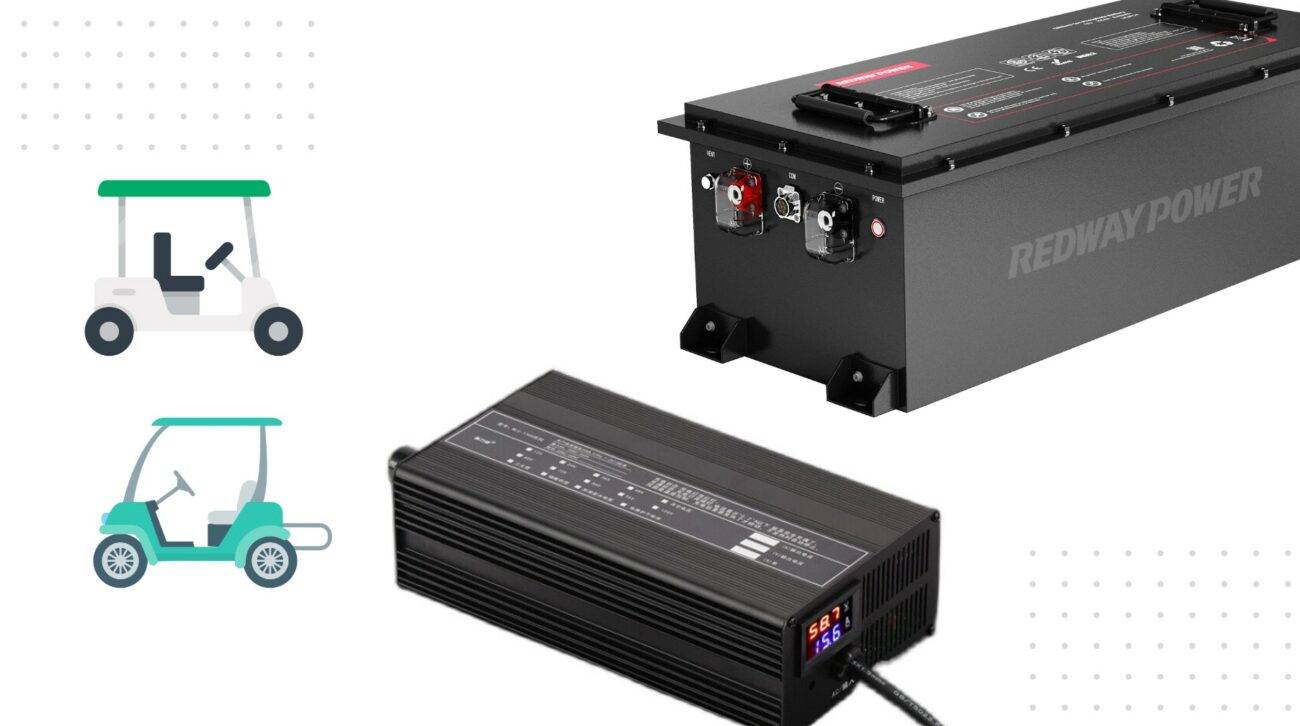- Forklift Lithium Battery
-
48V
- 48V 210Ah
- 48V 300Ah
- 48V 420Ah (949 x 349 x 569 mm)
- 48V 420Ah (950 x 421 x 450 mm)
- 48V 456Ah
- 48V 460Ah (830 x 630 x 590 mm)
- 48V 460Ah (950 x 421 x 450 mm)
- 48V 460Ah (800 x 630 x 600 mm)
- 48V 460Ah (820 x 660 x 470 mm)
- 48V 500Ah
- 48V 560Ah (810 x 630 x 600 mm)
- 48V 560Ah (950 x 592 x 450 mm)
- 48V 600Ah
- 48V 630Ah
-
48V
- Lithium Golf Cart Battery
- 12V Lithium Battery
12V 150Ah Lithium RV Battery
Bluetooth App | BCI Group 31
LiFePO4 Lithium
Discharge Temperature -20°C ~ 65°C
Fast Charger 14.6V 50A
Solar MPPT Charging - 24V Lithium Battery
- 36V Lithium Battery
- 48V Lithium Battery
-
48V LiFePO4 Battery
- 48V 50Ah
- 48V 50Ah (for Golf Carts)
- 48V 60Ah (8D)
- 48V 100Ah (8D)
- 48V 100Ah
- 48V 100Ah (Discharge 100A for Golf Carts)
- 48V 100Ah (Discharge 150A for Golf Carts)
- 48V 100Ah (Discharge 200A for Golf Carts)
- 48V 150Ah (for Golf Carts)
- 48V 160Ah (Discharge 100A for Golf Carts)
- 48V 160Ah (Discharge 160A for Golf Carts)
-
48V LiFePO4 Battery
- 60V Lithium Battery
-
60V LiFePO4 Battery
- 60V 20Ah
- 60V 30Ah
- 60V 50Ah
- 60V 50Ah (Small Size / Side Terminal)
- 60V 100Ah (for Electric Motocycle, Electric Scooter, LSV, AGV)
- 60V 100Ah (for Forklift, AGV, Electric Scooter, Sweeper)
- 60V 150Ah (E-Motocycle / E-Scooter / E-Tricycle / Tour LSV)
- 60V 200Ah (for Forklift, AGV, Electric Scooter, Sweeper)
-
60V LiFePO4 Battery
- 72V~96V Lithium Battery
- Rack-mounted Lithium Battery
- E-Bike Battery
- All-in-One Home-ESS
- Wall-mount Battery ESS
-
Home-ESS Lithium Battery PowerWall
- 24V 100Ah 2.4kWh PW24100-S PowerWall
- 48V 50Ah 2.4kWh PW4850-S PowerWall
- 48V 50Ah 2.56kWh PW5150-S PowerWall
- 48V 100Ah 5.12kWh PW51100-F PowerWall (IP65)
- 48V 100Ah 5.12kWh PW51100-S PowerWall
- 48V 100Ah 5.12kWh PW51100-H PowerWall
- 48V 200Ah 10kWh PW51200-H PowerWall
- 48V 300Ah 15kWh PW51300-H PowerWall
PowerWall 51.2V 100Ah LiFePO4 Lithium Battery
Highly popular in Asia and Eastern Europe.
CE Certification | Home-ESS -
Home-ESS Lithium Battery PowerWall
- Portable Power Stations
Why Should You Choose a 60V Lithium Ion Battery?

Choosing a 60V lithium-ion battery offers numerous advantages including high energy density, longer lifespan, and fast charging capabilities, making them ideal for various applications like electric vehicles and power tools. Their lightweight design also enhances portability, making them a favored choice among users seeking efficient power solutions.
Why Choose a 60V Lithium Ion Battery?
The 60V lithium-ion battery stands out due to its exceptional energy density, allowing for more power storage in a compact form. This feature is particularly advantageous for applications requiring sustained energy output without frequent recharges.
What Benefits Do 60V Lithium Ion Batteries Offer?
One of the primary benefits of 60V lithium-ion batteries is their high energy density, which translates into longer run times and reduced weight compared to traditional batteries. Additionally, they offer fast charging capabilities, ensuring minimal downtime during use.
| Benefit | Description |
|---|---|
| High Energy Density | More power storage in less space |
| Longer Lifespan | Reduced frequency of replacements |
| Fast Charging | Quick recharge times |
How Do 60V Lithium Ion Batteries Compare to Other Battery Types?
When compared to lead-acid batteries, 60V lithium-ion batteries are lighter and more compact, providing greater convenience. They also outperform lower voltage options like 18V or 36V batteries by offering increased energy capacity.
| Comparison | Lead-Acid | Lower Voltage | 60V Lithium-Ion |
|---|---|---|---|
| Weight | Heavier | Varies | Lighter |
| Energy Density | Lower | Lower | Higher |
| Lifespan | Shorter | Shorter | Longer |
What Are the Common Applications for 60V Lithium Ion Batteries?
60V lithium-ion batteries find applications across various sectors including:
- Electric vehicles (e-bikes, scooters)
- Power tools (cordless drills, lawn equipment)
- Renewable energy systems (solar storage)
What Are the Advantages and Disadvantages of Using a 60V Battery?
While the advantages include high efficiency and reduced maintenance needs, potential drawbacks involve higher initial costs and weight considerations affecting portability.
Advantages:
- High efficiency and performance.
- Long lifespan reduces replacement frequency.
- Minimal maintenance required.
Disadvantages:
- Higher upfront cost compared to alternatives.
- Increased weight may limit application flexibility.
How Can You Maintain a 60V Lithium-Ion Battery?
Proper maintenance is crucial for maximizing the lifespan of your 60V lithium-ion battery. Key practices include:
- Regularly checking charge levels.
- Avoiding extreme temperatures during storage.
- Following manufacturer guidelines for charging cycles.
What Are the Environmental Impacts of Lithium-Ion Batteries?
The production and disposal of lithium-ion batteries can have environmental implications due to resource extraction and potential pollution if not recycled properly. However, advancements in recycling technology are helping mitigate these impacts.
What Innovations Are Emerging in Lithium-Ion Battery Technology?
Recent innovations include:
- Improved battery management systems (BMS) for enhanced safety.
- Development of solid-state batteries offering higher energy densities.
- Research into sustainable materials for battery production.
Expert Views
“Choosing a 60V lithium-ion battery is not just about immediate performance; it’s about investing in technology that promises efficiency, longevity, and sustainability,” states Dr. Jane Smith, an expert in renewable energy technologies.
FAQ Section
- How long do 60V lithium-ion batteries last?
Typically, they can last between 5 to 10 years depending on usage and maintenance. - Can I use a 60V battery with lower voltage devices?
No, using a higher voltage battery with lower voltage devices can damage them. - Are there safety concerns with lithium-ion batteries?
Yes, improper handling can lead to risks such as overheating; following guidelines is essential for safety.














